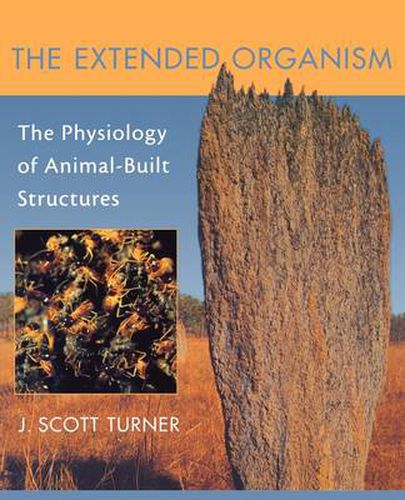Readings Newsletter
Become a Readings Member to make your shopping experience even easier.
Sign in or sign up for free!
You’re not far away from qualifying for FREE standard shipping within Australia
You’ve qualified for FREE standard shipping within Australia
The cart is loading…






Can the structures that animals build–from the humble burrows of earthworms to towering termite mounds to the Great Barrier Reef–be said to live? However counterintuitive the idea might first seem, physiological ecologist Scott Turner demonstrates in this book that many animals construct and use structures to harness and control the flow of energy from their environment to their own advantage. Building on Richard Dawkins’s classic, The Extended Phenotype, Turner shows why drawing the boundary of an organism’s physiology at the skin of the animal is arbitrary. Since the structures animals build undoubtedly do physiological work, capturing and channeling chemical and physical energy, Turner argues that such structures are more properly regarded not as frozen behaviors but as external organs of physiology and even extensions of the animal’s phenotype. By challenging dearly held assumptions, a fascinating new view of the living world is opened to us, with implications for our understanding of physiology, the environment, and the remarkable structures animals build.
$9.00 standard shipping within Australia
FREE standard shipping within Australia for orders over $100.00
Express & International shipping calculated at checkout
Can the structures that animals build–from the humble burrows of earthworms to towering termite mounds to the Great Barrier Reef–be said to live? However counterintuitive the idea might first seem, physiological ecologist Scott Turner demonstrates in this book that many animals construct and use structures to harness and control the flow of energy from their environment to their own advantage. Building on Richard Dawkins’s classic, The Extended Phenotype, Turner shows why drawing the boundary of an organism’s physiology at the skin of the animal is arbitrary. Since the structures animals build undoubtedly do physiological work, capturing and channeling chemical and physical energy, Turner argues that such structures are more properly regarded not as frozen behaviors but as external organs of physiology and even extensions of the animal’s phenotype. By challenging dearly held assumptions, a fascinating new view of the living world is opened to us, with implications for our understanding of physiology, the environment, and the remarkable structures animals build.